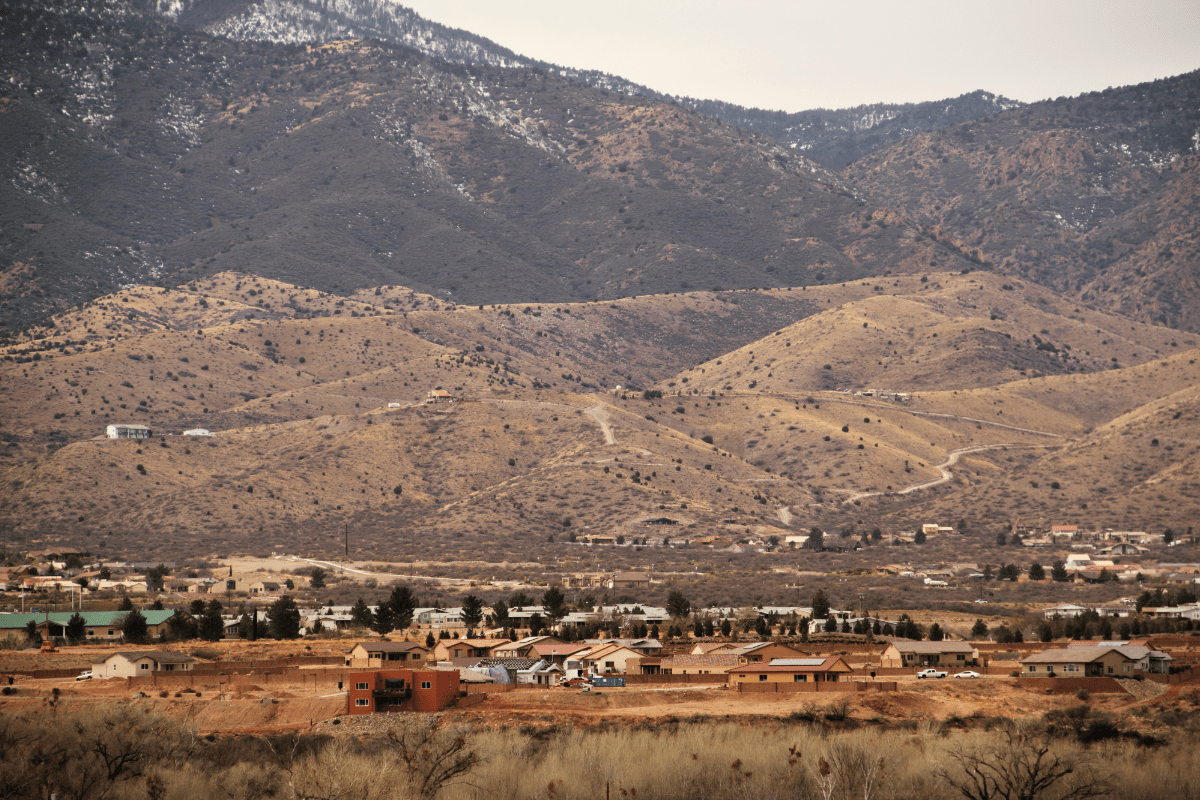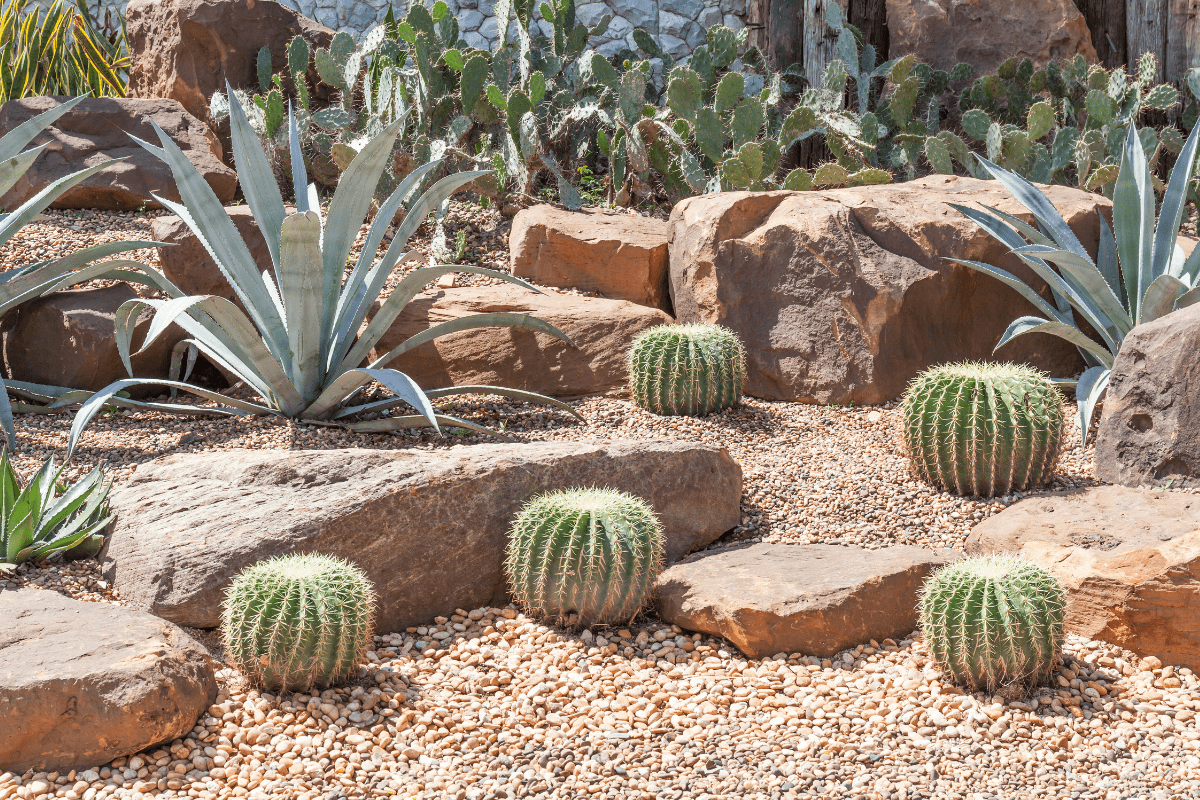Living in Prescott means you've got front-row seats to some of Arizona's most incredible day trip destinations. Within two hours of your doorstep, you can explore ancient cliff dwellings, slide down natural rock formations, or watch African animals splash around in the high desert. Here's your guide to the best escapes that won't require an overnight bag or a tank of gas.
Historic ghost towns that actually deliver
Jerome brings Wild West legends to life
Jerome perches impossibly on Cleopatra Hill just 35 miles northeast of Prescott, making it the perfect afternoon escape when you need a change of scenery. This former copper mining town once housed 15,000 residents during the 1920s boom, but today's population of 450 keeps the "Wickedest Town in the West" spirit alive through art galleries, wine tasting rooms, and genuinely entertaining ghost tours.
The best part? Walking around Jerome costs absolutely nothing. You can spend hours wandering the steep streets, peeking into shops, and taking photos of buildings that literally slide downhill thanks to unstable mining ground. The famous Sliding Jail moved 300 feet from its original spot, which seems perfectly fitting for a town that never quite followed the rules.
If you want more structured entertainment, the Gold King Mine Museum charges about twelve dollars for adults to explore mining equipment and get a feel for how hard life was back then. For the truly adventurous, evening ghost tours cost twenty-five to thirty dollars per person and hit all the allegedly haunted spots around town.
The drive up Highway 89A takes about 55 minutes and rewards you with sweeping views across the Verde Valley. Just remember that Jerome sits at 5,200 feet elevation, so it's noticeably cooler than Prescott year-round.
Key Jerome attractions:
- Free street exploration and photography
- Ghost tours with local legends
- Gold King Mine Museum
- Art galleries and wine tasting
- Jerome Grand Hotel (formerly hospital)
Clarkdale offers railroad adventures through wilderness
While you're in the area, don't miss Clarkdale, Arizona's first master-planned community built in 1912 for copper smelter workers. The town's crown jewel, the Verde Canyon Railroad, provides the only access to Sycamore Canyon Wilderness on four-hour journeys that cost between one hundred twenty-nine and one hundred thirty-nine dollars depending on season.
Every passenger gets both indoor seating and access to open-air viewing cars, which proves essential when you're passing through the 734-foot tunnel or spotting bald eagles overhead. The route showcases ancient Sinaguan ruins and red rock formations you simply can't reach by car. Special themed rides throughout the year include February's Chocolate Lovers' Festival and December's Magical Christmas Journey, though these book months in advance.
Ancient civilizations meet modern adventures
Montezuma Castle showcases incredible engineering
The Sinagua people knew how to pick real estate. Their five-story, 20-room cliff dwelling at Montezuma Castle National Monument sits 100 feet up a limestone cliff face, looking like it defies every law of physics and common sense. Built between 1100 and 1425 AD, this remarkably preserved structure receives over 400,000 visitors annually, though early morning visits before 10am offer the most peaceful experience.
Admission costs ten dollars per adult, with kids under 16 entering free. Your ticket also covers nearby Tuzigoot National Monument for seven days, making it an excellent value. The paved one-third mile loop trail works for wheelchairs and provides multiple viewpoints, though visitors haven't been allowed inside the dwelling since 1951 to preserve the structure.
Don't miss Montezuma Well, located 11 miles north, where a natural limestone sinkhole features ancient irrigation canals that still function after 1,000 years. Admission here is free, and the engineering achievements will make you question what you've accomplished lately.
Tuzigoot reveals Arizona's largest ancient village
The 110-room hilltop pueblo at Tuzigoot National Monument presents a completely different archaeological experience about 50-60 miles from Prescott. This site represents the largest Sinaguan village, overlooking the Tavasci Marsh, Arizona's largest remaining desert wetland where over 245 bird species have been documented.
The moderate one-third mile trail winds through the ruins while offering panoramic Verde Valley views. Unlike Montezuma Castle's vertical drama, Tuzigoot sprawls horizontally across the hilltop, showing how these ancient communities adapted to different landscapes and needs.
Out of Africa brings unexpected wildlife encounters
Who decided that Camp Verde needed a 104-acre African wildlife preserve? Someone brilliant, apparently. Out of Africa Wildlife Park delivers hands-on experiences you won't find at traditional zoos, where giraffes eat from your hand and tigers splash in pools while you zip-line overhead.
General admission starts at forty-two dollars and ninety-five cents online, though birthday month visitors pay just twelve dollars with ID. The park operates 9:30am to 5pm daily, closing only for Thanksgiving and Christmas. Plan at least five hours to experience everything, including the famous Tiger Splash show where big cats leap for toys in a massive pool.
The African Bush Safari Tour, included with admission, lets free-roaming animals approach your vehicle while guides share conservation stories. It's simultaneously educational and thrilling, especially when a giraffe decides your hat looks tasty.
Must-do park experiences:
- Hand-feeding giraffes
- Tiger Splash show
- African Bush Safari Tour
- Zip-lining over animal enclosures
- Conservation education programs
Red rocks and natural water parks
Sedona delivers world-famous scenery
The drive to Sedona takes about 84 minutes via the scenic Highway 89A route over Mingus Mountain, reaching 7,800 feet at the summit. Those hairpin turns and elevation changes reward you with panoramic vistas that justify every switchback. Winter travelers should check road conditions since snow occasionally affects the pass, though the alternate I-17 route adds only 15-20 minutes while avoiding mountain roads entirely.
Red Rock State Park offers the most accessible introduction to Sedona's geology, featuring 286 acres with five miles of interconnected trails alongside Oak Creek. The park maintains strict environmental standards with no pets allowed and carry-out-all-trash policies. With over 125,000 annual visitors, arriving before 9am ensures both parking and trail solitude.
Environmental education programs run weekly, with the visitor center providing context about this unique ecosystem where Sonoran Desert meets riparian habitat. The contrast between red sandstone and green cottonwoods creates Instagram-worthy scenes around every bend.
Slide Rock State Park creates natural thrills
Seven miles north in Oak Creek Canyon, Slide Rock State Park delivers Arizona's most famous natural water park. The 80-foot natural sandstone chute, polished smooth by centuries of flowing water, creates a thrilling ride through crystal-clear pools that maintains its appeal across generations.
Your admission also covers access to the historic Pendley Homestead apple farm, where trees still produce fruit sold at the park market. With over 254,000 annual visitors, this ranks among Arizona's most popular state parks. Water temperatures can approach freezing in spring while reaching comfortable levels by summer, though weekend crowds fill parking lots by 10am during peak season.
The park enforces strict pet policies, prohibiting dogs from the creek year-round and from the entire park May through September. Plan accordingly if you're traveling with furry companions.
Fossil Creek offers pristine swimming
For swimming without crowds, Fossil Creek provides one of Arizona's hidden treasures. This Wild and Scenic River, one of only two in Arizona, maintains a constant 70-degree temperature year-round thanks to springs releasing 30 million gallons daily.
Between April and October, visitors must reserve six-dollar permits through Recreation.gov, with gates opening at 8am and requiring exit by 8pm. The 14-mile dirt access road demands high-clearance vehicles but rewards adventurers with waterfalls, natural pools, and rare travertine formations that look like something from a geology textbook.
Fossil Creek essentials:
- Advance permit reservations required
- High-clearance vehicle necessary
- Constant 70-degree water temperature
- Gates open 8am to 8pm
- Wild and Scenic River designation
Wine country in unexpected places
The Verde Valley Wine Trail encompasses over 25 tasting rooms scattered across Cottonwood, Jerome, Cornville, and Clarkdale, all within 45-60 minutes of Prescott. Arizona's unique terroir produces distinctive wines earning international recognition, with hot days and cool nights at elevation creating ideal growing conditions.
Tasting fees typically run twelve to twenty-five dollars for four or five pours, with most venues welcoming families and even dogs on patios. Old Town Cottonwood clusters multiple tasting rooms within walking distance along Main Street, including Arizona Stronghold, Burning Tree Cellars, Pillsbury Wine Company, and Winery 101, creating an informal wine walk requiring no designated driver between stops.
Jerome adds elevation to the wine experience, with Caduceus Cellars, owned by Tool's Maynard James Keenan, offering tastings with million-dollar views across the Verde Valley. Page Springs Cellars near Cornville pioneered Verde Valley viticulture, specializing in Rhône varietals that thrive in Arizona's climate.
Many wineries import grapes from southeastern Arizona's Willcox region, blending local terroir with statewide viticulture knowledge. The result? Wines that taste distinctly Arizonan while competing with traditional wine regions.
Family-friendly adventures
Blazin' M Ranch delivers authentic Western entertainment
Blazin' M Ranch in Cottonwood recreates frontier entertainment 50 minutes from Prescott with surprising authenticity. Gates open at 5pm for a complete Western experience including mechanical bull riding, axe throwing, and old-time photo opportunities before the chuck wagon dinner at 6:30pm.
The all-you-can-eat meal features barbecued chicken and ribs with traditional sides, followed by a one-hour country music show at 7:30pm. Adults pay thirty-five dollars and ninety-five cents plus tax, seniors receive a three-dollar discount, and children 3-12 enter for nineteen dollars and ninety-five cents plus tax.
The climate-controlled barn accommodates groups from 2 to 280, making this equally suitable for intimate dates or multi-generational gatherings. The entertainment feels genuinely wholesome without being cheesy, hitting that sweet spot where grandparents and teenagers both have fun.
Lowell Observatory connects Earth to cosmos
Where better to contemplate your place in the universe than the observatory where Pluto was discovered in 1930? Lowell Observatory in Flagstaff, 75-90 minutes north of Prescott, offers cosmic perspective with International Dark Sky designation providing exceptional stargazing opportunities.
General admission costs thirty-five dollars for adults and twenty dollars for children 6-17, with kids under six entering free. Interactive exhibits in the Orbits Curiosity Zone engage young scientists, while historic telescope tours reveal how Percival Lowell's Mars observations influenced science fiction. Night programs include constellation tours and telescope viewing of planets, though these depend on weather conditions.
Most families spend 3-4 hours exploring exhibits, attending planetarium shows, and peering through telescopes that have operated for over a century. The experience puts earthly concerns in perspective while inspiring the next generation of space explorers.
Prescott's backyard lakes
Before venturing farther afield, Watson Lake just 4 miles north charges only a three-dollar day-use fee for access to Arizona's most photographed landscape. The Granite Dells surrounding this reservoir create a playground for rock climbers and photographers while kayakers navigate hidden coves.
Swimming is prohibited, but fishing for bass, catfish, and crappie remains popular year-round. The four-mile Peavine Trail extends along the historic railroad grade, suitable for hiking and mountain biking. With annual visitation over 125,000, this proves that sometimes the best adventures happen closest to home.
The ancient granite formations tell geological stories spanning millions of years, creating natural sculptures that change with every angle and light condition. Early morning and late afternoon provide the most dramatic photography opportunities.
Timing your adventures right
Understanding seasonal patterns transforms good trips into perfect timing. Spring brings ideal temperatures ranging 60-80 degrees, wildflower blooms, and manageable crowds at most destinations. Sedona's red rocks frame carpets of Mexican gold poppies and purple lupines, while Fossil Creek runs full from snowmelt.
Summer shifts strategies toward early morning starts and higher elevations. Out of Africa Wildlife Park's morning hours beat afternoon heat, while Jerome's 5,200-foot elevation provides relief when valley temperatures exceed 100 degrees. Monsoon season delivers dramatic afternoon thunderstorms creating spectacular photography but requiring flash flood awareness.
Fall offers perhaps the year's best weather, with comfortable temperatures and changing colors along Oak Creek. Cottonwoods turn golden in October, creating stunning contrasts against red rocks. Winter rarely prevents access to major destinations, though Highway 89A over Mingus Mountain occasionally requires chains during snow events.
Seasonal timing tips:
- Spring: wildflowers and perfect weather
- Summer: early starts, higher elevations
- Fall: golden cottonwoods in October
- Winter: I-17 alternate for mountain conditions
- Monsoon: afternoon storms, flash floods
Planning essentials that prevent problems
Gas stations line major routes from Prescott, but strategic filling prevents problems. Top off before crossing Mingus Mountain to Jerome, where services are limited. Cell coverage varies dramatically outside urban areas, so download offline maps before departing, especially for Forest Service roads accessing Fossil Creek.
Advance reservations prevent disappointment at popular destinations. Fossil Creek permits sell out weeks ahead for weekend dates April through October. Verde Canyon Railroad's special event trains book months in advance, while standard departures fill during peak season. Out of Africa Wildlife Park offers online discounts, and arriving at opening avoids both crowds and afternoon heat.
Most destinations accept credit cards, though some parking areas and Forest Service sites require cash. Arizona 511 provides real-time road conditions, critical for winter mountain travel or summer storm systems. A little planning goes a long way toward ensuring your day trip becomes a highlight rather than a headache.
These destinations within two hours of Prescott deliver experiences ranging from ancient civilizations to modern wildlife encounters, proving that Arizona's greatest adventures often lie just down the road. Whether you're feeding giraffes, sliding down natural rock formations, or contemplating the cosmos, your next great escape is closer than you think.





